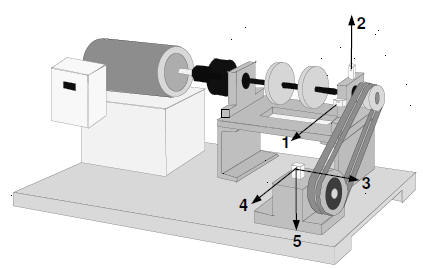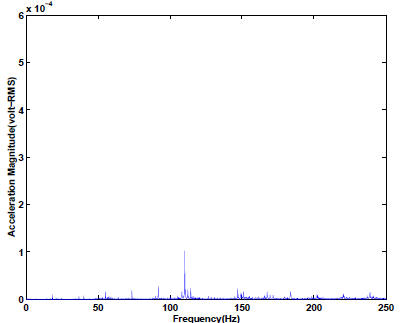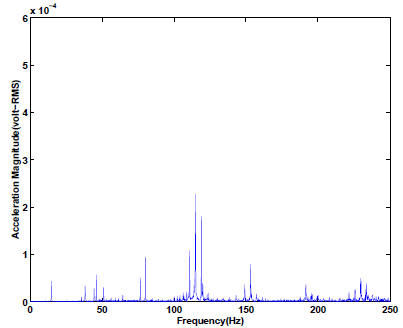Vibration Analysis of Belt Drives in Rotating Machinery
Lin Liu & Suri GaneriwalaSpectraQuest Inc., 8227 Hermitage Road, Richmond, VA 23228
Published: July, 01 2005
Abstract
Belt drives are commonly used in a variety of power transmission applications. Improper installation and maintenance of belt can have an enormous impact on the operation and degradation of a machine. Vibration signatures are widely promoted for studying belt drive malfunctions. This note presents the results of an experiment performed on a two belt drive system. The effect of belt tension, speed, sheave eccentricity, and misalignment conditions were investigated. The results indicate that eccentric sheave show amplitude modulation and produce high vibration. Sheave eccentricity also excited belt natural frequencies easily. Meanwhile, the effect of misalignment on the vibration signature is not significant.
Introduction
The equipments used in the experiment include: One SpectraQuest Machinery Fault Simulator (MFS), two A42 V belts, a laptop with VibraQuest data acquisition and analysis software installed, a SpectraPad portable data acquisition device, two PCB accelerometers, one Wilcoxontri-axial accelerometer.
First, baseline data is collected under different rotor speeds and different belt tension forces. Then offset misalignment is introduced into the driving belt sheave and data is collected under the same speed and belt tension force as the baseline. Finally, the driving belt sheave is replaced by an intentionally made eccentric sheave and data is collected under the ame speed and belt tension force as the baseline. In the eccentric sheave test, rotor speed is increased slowly to observe the resonance of belts and the data under resonance condition are collected.
The data acquisition frequency limit is 2000Hz and 8 seconds data is collected for each case. The two rotor speeds tested are 20Hz and 40Hz. It should be noted that these speeds are read from the motor controller and because there are errors in the controller, the actual speeds have some deviations from the readings. The belt tension force can be adjusted by means of turning a screw which will change the center distance of the two belt sheaves. The two belt tension force cases, high and low, are determined by hand feelings.
Some of the observations can be highlighted as:
The effect of sheave eccentricity on vibration signature is significant. Although vibration magnitude is not necessarily increased by a sheave eccentricity, sheave eccentricity will create strong amplitude modulation. The natural frequencies of belts can be excited by a sheave eccentricity easily. When the top section of a belt is in resonance, the vibration level of the machine is increased. However, an increase in machine vibration is not significant when only the bottom section of a belt is in resonance.
The effect of belt tension force on machine vibration signature is significant. The vibration spectrum has the tendency to move to the higher frequency as the the belt tension force is increased. The reasons might be: 1) by increasing the belt tension force, the whole machine structure is strengthened. 2) the natural frequencies of the belt itself are increased by an increase in belt tension force.

Fig 1: Experimental Setup

Fig 2: Misalignment data with rotational nominal speed 20Hz

Fig 3:Misalignment datawith rotational nominal speed 40Hz





